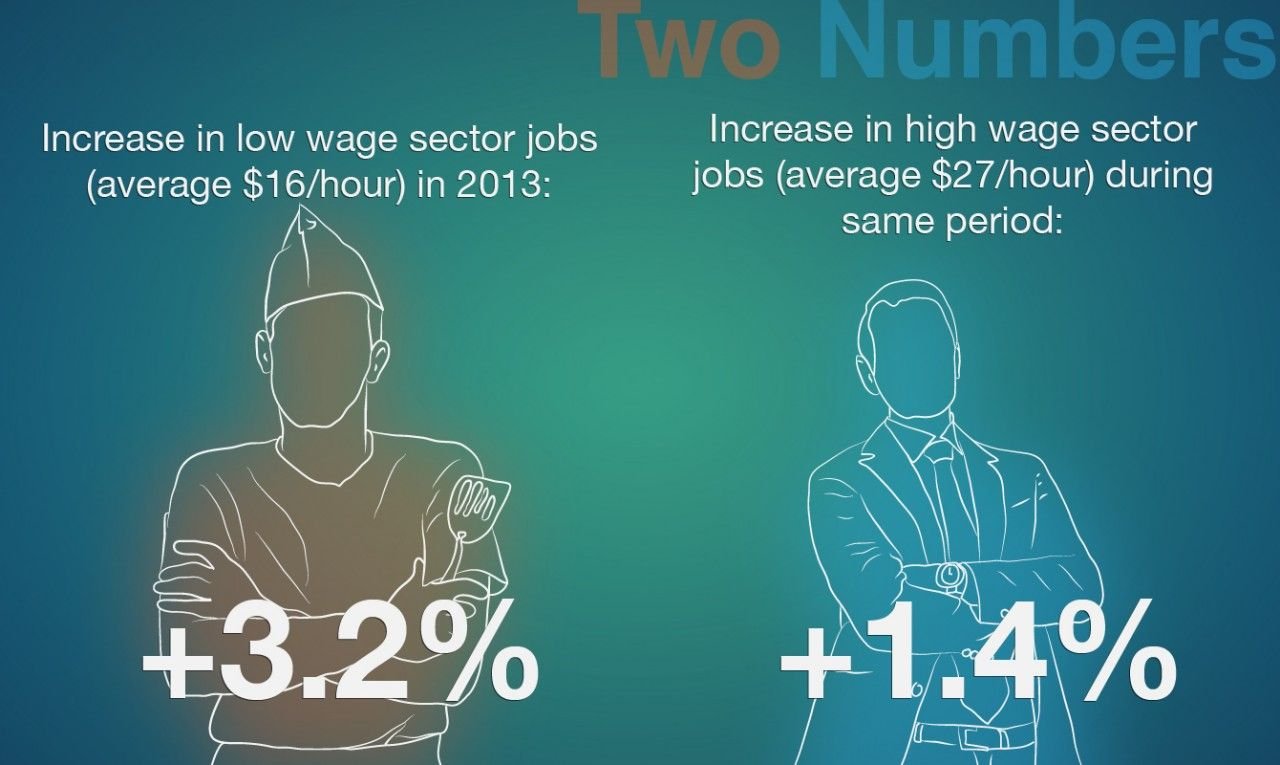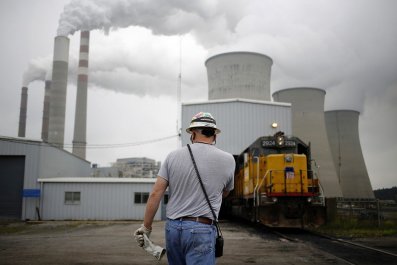
On the face of it, 2013 seemed a decent year for the beleaguered U.S. labor market. The jobless rate started close to 8 percent in January and fell to 6.7 percent by December. Around 2.2 million jobs were created, an average of about 184,000 new jobs a month.
But not all jobs are created equal. The job crisis may be going away only to be replaced with wage concerns. The fastest growth in the labor market last year occurred in sectors dominated by low-wage positions. And to make matters worse, real wages seem to be falling in those sectors.
Last year low-wage job sectors grew at more than twice the rate of high-wage sectors, accounting for 54 percent of all new jobs created, according to an analysis by Westwood Capital. At the same time, real wages in the low-wage sectors actually fell slightly, a drop of 0.22 percent, compared to a modest rise of 0.26 percent in the higher-wage sectors.
Low-wage sectors are typically retail, leisure and hospitality, administration and waste-services positions, where workers make under $16 an hour, on average. Jobs in higher wage sectors, by contrast, pay an average of more than $27 an hour.
Normally, low-wage jobs tend to be the first opportunities created after a recession, followed by higher wage jobs a little later. But so far, after several years of slow economic recovery, there's not much sign of a comeback in high wage jobs. "We are in the fifth year following the Great Recession and are seeing job creation more typical of the first postrecession year," said Daniel Alpert, managing partner of Westwood Capital and author of The Age of Oversupply. "This is what secular stagnation looks like up close."
Low-wage sectors account for around one third of total private-sector employment, while high-wage sectors make up the remaining two-thirds. So keep your eye on that ratio. If we see further shifts toward low-wage jobs the overall economy could be headed for trouble.

























